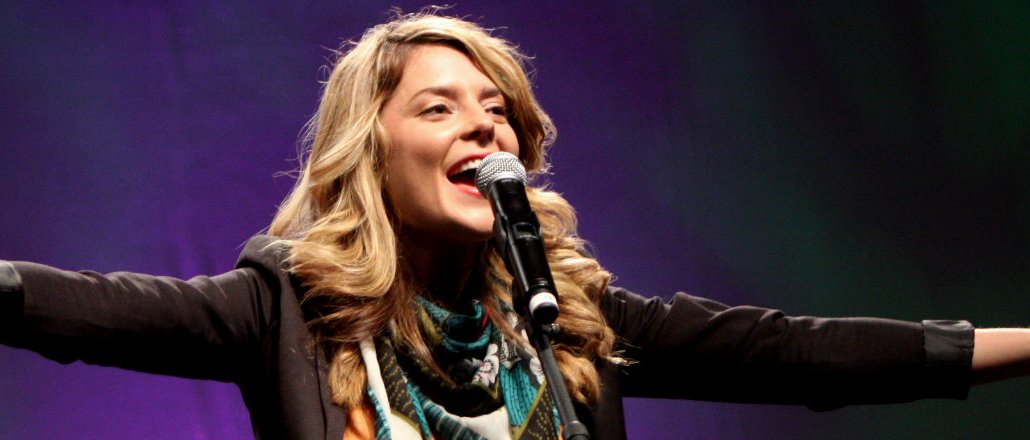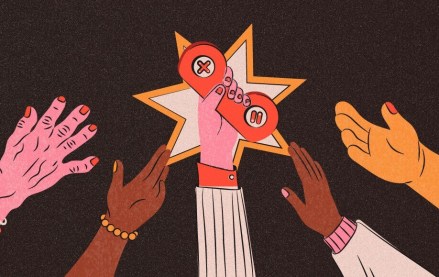
Before Grace Helbig had her own talk show on E!, she was a self-made marquee name on YouTube. Same for comedy duo Smosh, now stars of their own movie. YouTube, in an effort to continue growing its platform with more content and viewers (and the revenue that comes with both), wants to have a more proactive hand in discovering the next Helbig and Smosh.
Its annual “NextUp” program, for example, is designed to find and support up-and-coming video stars. Those who are selected to the NextUp program receive a $2,500 voucher for production equipment as well as a spot in a week-long creator “boot camp” held at a YouTube Space, where they are coached by production experts on how to shoot high-quality videos. Additionally, these creators get one-on-one mentorship from NextUp graduates as well as three months of support from YouTube’s content partnerships team on the best ways to grow their audience on the platform.
“NextUp is about shining a spotlight on fast-rising creators on the platform,” said Sara Mormino, director of YouTube global content operations. This year, the NextUp program plans to select up to 360 YouTube channels from around the world. The program is currently running in the U.S. and U.K., but will soon expand to Tokyo, Sao Paulo, Berlin, Paris, Toronto and Mumbai. YouTube has production facilities — called “YouTube Spaces” — in each of these cities.
To be sure, creators interested in NextUp first have to demonstrate an ability to grow an audience on YouTube: Applicants need to have between 10,000 and 100,000 subscribers in order to be considered for the program. Other requirements include being an official YouTube channel partner (which means ads are turned on for the channel); being in good standing (no strikes against the channel for copyright violations); and having posted at least three videos to the channel in the last 90 days.
“We’re specifically targeting channels between 10,000 and 100,000 subscribers because we think we can have the biggest impact on creators who are on the verge of finding their niche and becoming sustainable,” said Mormino.
YouTube has a core team of a dozen people “spanning multiple international offices and job functions” devoted to the NextUp program, she added.
NextUp is part of a broader effort by YouTube to play a supporting role in jump-starting the careers of its homegrown talent. For emerging stars that don’t live close to a YouTube Space, the company has the YouTube Creator Academy, which offers educational content and audience development videos in 20 different languages.
For bigger names like Freddie Wong and Lilly Singh, the company has been running marketing campaigns to draw attention to their channels. With the launch of YouTube Red, it’s also spending big bucks on original series featuring some of these stars.
These efforts are doubly important now that YouTube has more competition for eyeballs. Facebook, Snapchat and Instagram are all growing in video, and many YouTubers are active on those platforms as well. YouTube’s pitch is that it’s still the only place to earn significant revenue. But to do that, creators need an audience big enough to attract ad spend.
“It’s in everyone’s mutual self-interest to build this ecosystem in a way that generates more revenue for everyone concerned,” said Chris Dorr, executive director of the Global Online Video Association. “Creators are very important to YouTube’s success, and should be treated accordingly.”
Image via Gage Skidmore
More in Media

From sidelines to spotlight: Esports events are putting creators center stage
Esports events’ embrace of content creators reflects advertisers’ changing priorities across both gaming and the wider culture. In the past, marketers viewed esports as one of the best ways to reach gamers. In 2025, brands are instead prioritizing creators in their outreach to audiences across demographics and interest areas, including gaming.

Condé Nast and Hearst strike Amazon AI licensing deals for Rufus
Condé Nast and Hearst have joined the New York Times in signing a licensing deal with Amazon for its AI-powered shopping assistant Rufus.

Media Briefing: AI payouts may be entering a new era
AI compensation is evolving — and new models, not just publisher demands, are driving the shift beyond flat-fee licensing.





